Early Tuesday morning for the first time since the winter solstice of 1638, a lunar eclipse will coincide with the winter solstice, which is the shortest day of the year.
A total lunar eclipse comes about because the sun, Earth and moon are almost exactly in line, with the Earth in the centre. Also at around this time both sun and moon will be visible, this rarity is called a selenehelion. During this alignment the full moon will seem much dimmer than usual, and sunlight passing through our atmosphere will cast a ruddy glow on the lunar surface.
To an observer that was standing on the moon’s surface and looking towards Earth there would be a ring of reddish light encircling the Earth, this would be marking all of the sunrises and sunsets around our planet.
The eclipse will begin at 5.28am, as the moon passes through the outer part of Earth’s shadow, this is known as the penumbra. At this point the moon will take on a yellowish colour. The moon will then pass into the darkest part of Earth’s shadow at 6.32am and by 7.40am it will be completely eclipsed.
In the UK the eclipse will be most easily visible in Northern Ireland and Scotland’s Western Isles. It will also be visible across North America.
















